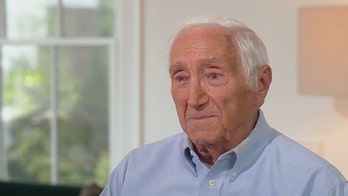The Washington Post drew widespread criticism for its distorted coverage of the recent escalation between Israel and Hezbollah, which resulted in the deaths of 12 Israeli children. The Post's front page featured a headline that portrayed Israel as the aggressor, despite the fact that Hezbollah launched the initial rocket attack.
The Washington Post's front page coverage of the recent escalation between Israel and Hezbollah sparked widespread condemnation due to its misleading headline and inadequate context. The article, published on July 29, featured a large image of Israelis mourning the death of an 11-year-old victim of Hezbollah's rocket attack. However, the headline "Israel Hits Targets In Lebanon" failed to clearly convey that the Israeli strikes were in retaliation for the Hezbollah attack.
The Post's front page quickly went viral, sparking criticism from politicians, journalists, and the general public. Many accused the newspaper of downplaying the role of Hezbollah in the escalation and portraying Israel as the aggressor.

The Post's Misleading Headline Distorts Hezbollah's Deadly Attack
In response to the backlash, the Post published an editor's note acknowledging the lack of adequate context in the headline and subheadline. The editors wrote that the headlines should have noted that the Israeli strikes were a response to the rocket attack that killed 12 teenagers and children in the Israeli-controlled Golan Heights.
The Post's distorted coverage raised concerns about media bias and the potential for misinformation to spread during conflicts. Critics argued that the headline created an inaccurate impression of the situation, potentially misleading readers and undermining public understanding of the conflict.

The Post's Misleading Headline Distorts Hezbollah's Deadly Attack
The incident also highlighted the challenges faced by media outlets in covering complex and rapidly evolving situations. Balancing the need for timely and informative reporting with the responsibility to provide accurate context and avoid bias can be a difficult task.
In this case, the Post's editors admitted that they had fallen short in providing adequate context for the Israeli strikes. The editor's note acknowledged the mistake and committed to improving the newspaper's coverage of future conflicts.

The Post's Misleading Headline Distorts Hezbollah's Deadly Attack
The Post's flawed coverage also raised questions about the role of images in news reporting. The use of a photograph of an Israeli victim of Hezbollah's attack could have potentially swayed readers' perceptions of the conflict. Critics argued that the image could have elicited sympathy for the victims and their families, while obscuring the fact that Hezbollah initiated the violence.
Ultimately, the Post's misleading headline and lack of context undermined its credibility and raised concerns about the potential for media bias to distort public understanding of complex conflicts. The incident serves as a reminder of the importance of accurate and responsible reporting, especially during times of tension and conflict.










